-
1Step 1: Parts
To make this you will need an ESP8266 board and you can also add a battery if you want.
I suggest to use a board from DFRobot with this module as the pinout will be compatible and you will face no issues anywhere, I used Firebeetle board from DFRobot as it has on board battery charging and monitoring solution.
I would also recommend using a PCB to make some project using this module so that adding battery/OLED display/switch/esp8266 doesnt remain difficult. You can order your PCBs from PCBWAY as they offer 10 PCBs for just 5$. Check out their online Gerber viewer function.
![]()
![The Firebeetle board ESP8266]()
-
2Step 2: Download and set up the Arduino IDE
Download the Arduino IDE from here.
1. Install the Arduino IDE and open it.
2. Go to File > Preferences
![]()
3. Add http://arduino.esp8266.com/stable/package_esp8266com_index.jsonto the Additional Boards Manager URLs.
4. Go to Tools > Board > Boards Manager
5. Search for ESP8266 and then install the board.
6. Restart the IDE.
-
3Step 3: Prepare the parts
1. Solder the headers on the OLED shield as well as the microcontroller module.
TIP: Use a breadboard to align the headers and then solder the module keeping the headers inserted into the breadboard.
![]()
![]()
2. Align the Corners with the white colors on the on both the modules and stack them using the headers. Now connect the board to the PC.
![]()
-
4Step 4: Coding the module
1. Download the following libraries:
1.1. https://github.com/akarsh98/DFRobot_OLED12864
1.2. https://github.com/akarsh98/DFRobot_BME280
2. Extract the downloaded libraries, rename them by removing the name "-master" from them.
3. Navigate to the libraries folder in your Arduino IDE and paste both the folders here.
4. Restart the Arduino IDE.
5. Navigate to File>Examples>DFRobot_OLED12864>testall and open this code.
![]()
6. Navigate to Tools > Board. Select the appropriate board that you are using, Firebeetle ESP8266 in my case.
7. Select the correct comm. port by going to Tools > Port.
8. Hit the upload button.
9. When the tab says Done Uploading you are ready to use the shield.
After uploading open the serial monitor to view the following details.
-
5Step 5: Playing with the shield
1. Connect the module with a power supply using the micro USB connector on board or just switch on the switch if you have connected a battery.
2. As soon as the module is connected you will see the display coming to life.
![]()
3. When you will use the different buttons on the joystick you will see that the display in real time shows what direction have you moved the joystick in.
4. Pressing the button A & B show different types of data as in the pictures below.
![A button results]()
A button results
![B button shows the on-board accelerometer result]()
B button shows the on-board accelerometer result
5. CONGO! The module is working as expected.
Easy to Implement UI || OLED Display with Joystick
This module has an OLED display with two buttons, 5-way joystick and a 3-axis accelerometer. This is useful in setting up UI for a project.
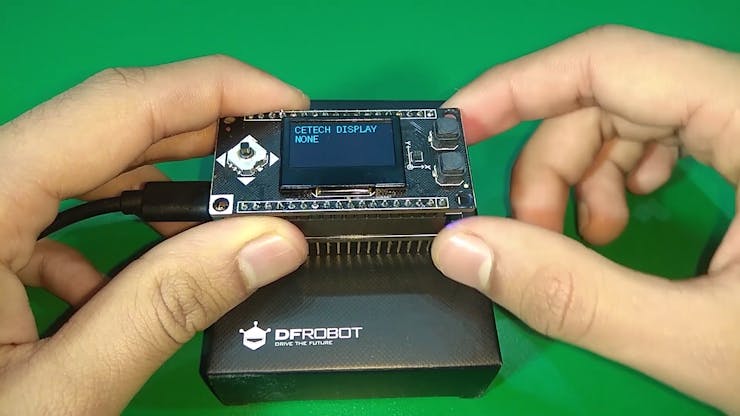
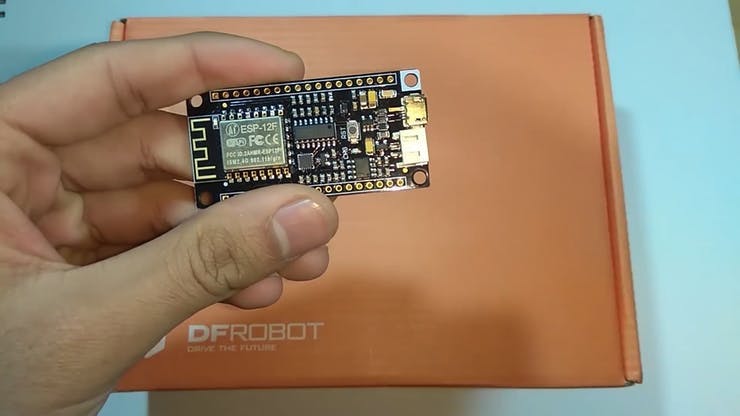
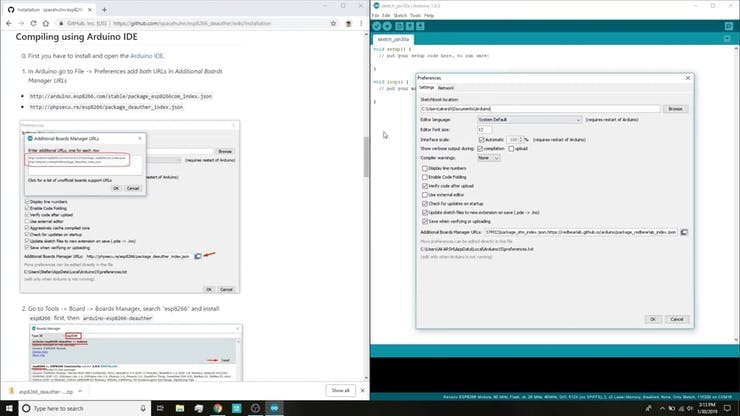
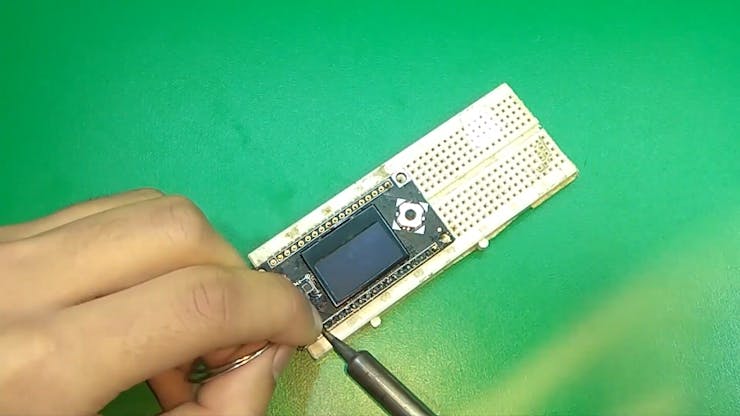

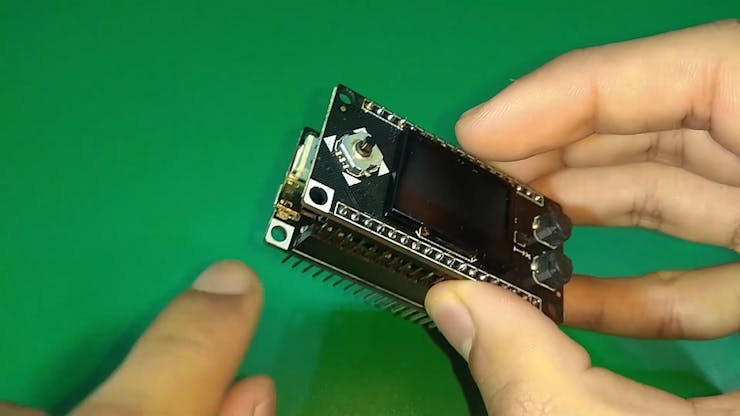
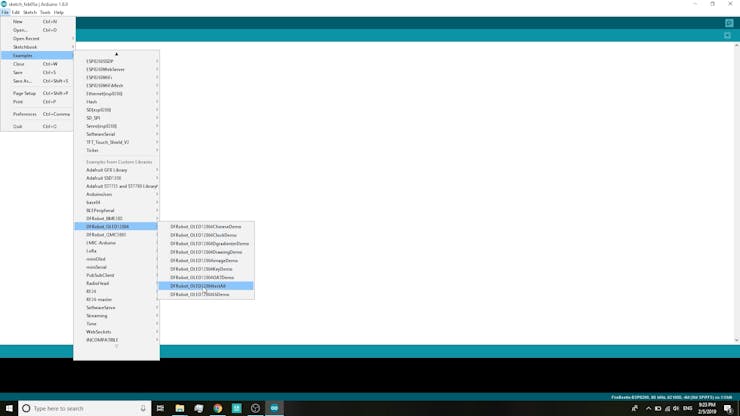

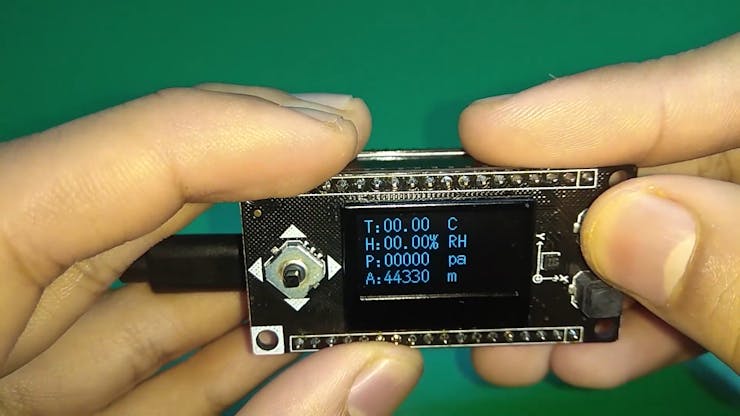
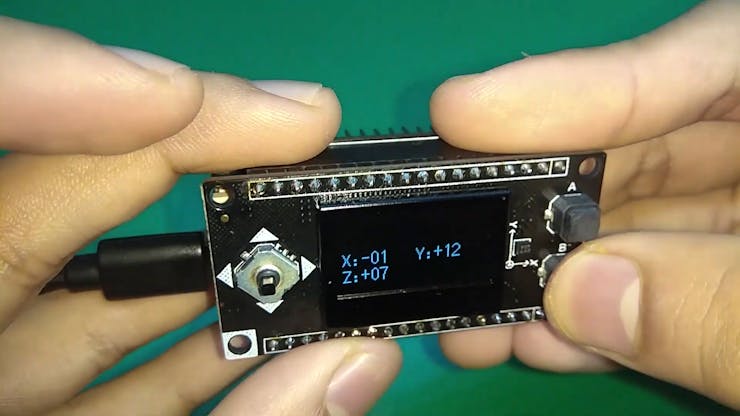
Discussions
Become a Hackaday.io Member
Create an account to leave a comment. Already have an account? Log In.